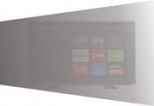Python Utilities Using Piping from PowerShell or CMD.exe
Python is very powerful on Windows, Linux, or macOS. As network administrators, it is often useful to build your own utilities that can receive input on standard input (STDIN) and this brief post explains how to do it with Python.
Continue reading...










